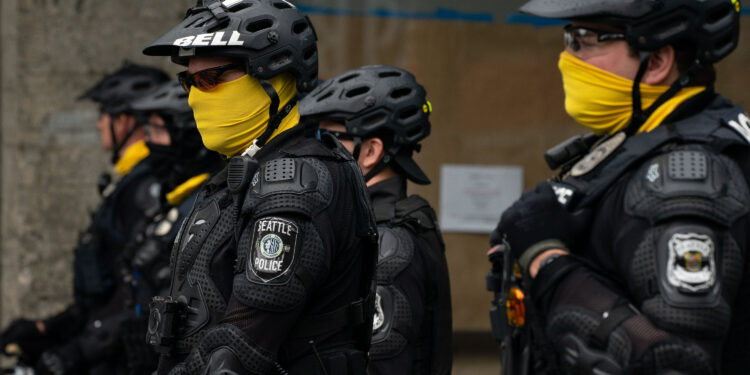Federal oversight of the Seattle Police Department officially ended Wednesday when a federal judge terminated 13 years of court supervision that followed widespread use-of-force violations and biased policing practices.
U.S. District Judge James Robart dismissed the consent decree in a landmark decision that returns full control of the department to city officials. The oversight began in 2012 when the Department of Justice filed a lawsuit and reached a settlement with Seattle over systematic police misconduct.
Robart opened the 90-minute hearing by announcing his intention to grant the joint motion by the city and DOJ to terminate the agreement, then asked Mayor Bruce Harrell and newly appointed Police Chief Shon Barnes to address the court about plans to maintain reforms.
The judge recalled the catalyst for federal intervention: the August 30, 2010, shooting death of John T. Williams, a First Nations wood carver who was carrying a piece of wood and closed pocketknife when shot by former Officer Ian Birk in a downtown intersection.
“One of my sincerest wishes is that John T. Williams could realise the significance of what his death has created,” Robart said. Williams’ brother Rick attended the hearing and was recently appointed to the Community Police Commission.
The 2011 DOJ investigation found Seattle officers used excessive force in one of every five encounters involving force, often targeting individuals in crisis, those intoxicated, or people with disabilities. Evidence suggested biased policing, though inadequate data prevented formal findings.
Harrell, who served on City Council when the 2012 settlement was reached, described the department as transformed. “Public safety from our police department requires not just swift responses, strong investigations and a well-staffed department, but they must be culturally competent, community based, accountable, and they have to be masters of de-escalation,” he stated.
The judge questioned Harrell about the Seattle Police Officers Guild’s opposition throughout the consent decree process, noting that more than 100 officers backed by SPOG unsuccessfully sued the court in 2014 over new use-of-force policies.
Harrell assured the court that city-guild negotiations were “fruitful and successful,” whilst acknowledging that new CARE team deployment depends on ongoing union negotiations. The teams would provide unarmed crisis response through Community Assistance Response and Engagement programmes.
SPOG President Mike Solan called the consent decree “weaponised financial grift” in a post-hearing statement, claiming new policies had “a detrimental impact on Seattle public safety.” The union estimated costs at $220 million, though detailed city budget documents show approximately $150 million, with $9 million for court-appointed monitors.
Chief Barnes, who served as DOJ subject matter expert during the Minneapolis Police investigation following George Floyd’s murder, emphasised his department’s commitment to preventing systematic misconduct. “My department goals are clear and attainable: crime prevention, community engagement, employee safety and wellness and continuous improvement,” he said.
However, the American Civil Liberties Union of Washington disputed claims of transformation. “Racial disparities remain, and use-of-force issues persist with SPD,” said Jazmyn Clark, smart justice policy programme director. “This is not a moment for self-congratulations.”
City data shows significant improvement in use-of-force incidents. Between 2014 and 2019, officers reported approximately 1,025 force incidents annually. From 2019 to 2024, that number dropped to about 670 per year, representing a 35 per cent decrease.
The path to compliance proved lengthy and difficult. The original 2012 agreement anticipated full implementation within five years, but resistance from city leadership and the police guild delayed progress. Brief compliance was achieved in 2018, but violent responses to 2020 Black Lives Matter protests renewed court concerns.
Earlier this year, the City Council passed comprehensive crowd-control legislation that satisfied the judge’s requirements, completing the final step toward ending federal oversight.







